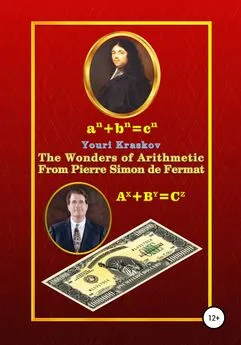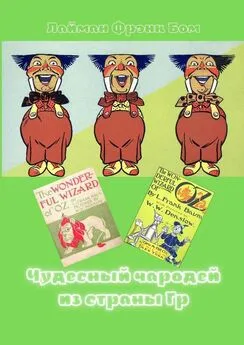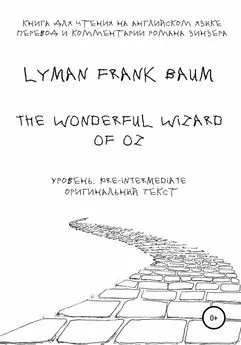Youri Kraskov - The Wonders of Arithmetic from Pierre Simon de Fermat
- Название:The Wonders of Arithmetic from Pierre Simon de Fermat
- Автор:
- Жанр:
- Издательство:неизвестно
- Год:2021
- ISBN:978-5-532-98629-9
- Рейтинг:
- Избранное:Добавить в избранное
-
Отзывы:
-
Ваша оценка:
Youri Kraskov - The Wonders of Arithmetic from Pierre Simon de Fermat краткое содержание
The Wonders of Arithmetic from Pierre Simon de Fermat - читать онлайн бесплатно ознакомительный отрывок
Интервал:
Закладка:
32
For mathematicians and programmers, the notion of function argument is quite common and has long been generally accepted. In particular, f (x, y, z) denotes a function with variable arguments x, y, z. The definition of the essence of a number through the notion of function arguments makes it very simple, understandable and effective since everything what is known about the number, comes from here and all what this definition does not correspond, should be questioned. This is not just the necessary caution, but also an effective way to test the strength of all kinds of structures, which quietly replace the essence of the number with dubious innovations that make science gormlessly and unsuitable for learning.
33
An exact definition the notion of data does not exist unless it includes a description from the explanatory dictionary. From here follows the uncertainty of its derivative notions such as data format, data processing, data operations etc. Such vague terminology generates a formulaic thinking, indicating that the mind does not develop, but becomes dull and by reaching in this mishmash of empty words critical point, it simply ceases to think. In this work, a definition the notion of “data” is given in Pt. 5.3.2. But for this it is necessary to give the most general definition the notion of information, which in its difficulty will be else greater than the definition the notion of number since the number itself is an information. The advances in this matter are so significant that after they will follow a real technological breakthrough with such potential of efficiency, which will be incomparably higher than which was due to the advent of computers.
34
Computations are not only actions with numbers, but also the application of methods to achieve the final result. Even a machine can cope with actions if the mind equips it with appropriate methods. But if the mind itself becomes like a machine i.e. not aware the methods of calculation, then it is able to create only monsters that will destroy also him selves. Namely to that all is going now because of the complete lack of a solution to the problem of ensuring data security. But the whole problem is that informatics as a science simply does not exist.
35
Specialists who comment on the ancients in their opinion the Euclid's "Elements" and the Diophantus' "Arithmetic", as if spellbound, see but cannot acknowledge the obvious. Neither Euclid nor Diophantus can be the creators the content of these books, this is beyond the power of even modern science. Moreover, these books appeared only in the late Middle Ages when the necessary writing was already developed. The authors of these books were just translators of truly ancient sources belonging to another civilization. Nowadays, people with such abilities are called medium.
36
If from the very beginning we have not decided on the concept of a number and have an idea of it only through prototypes (the number of fingers, or days of the week etc.), then sooner or later we will find that we don’t know anything about numbers and follow the calculations an immense set of empirical methods and rules. However, if initially we have an exact definition the notion of number, then for any calculations, we can use only this definition and the relatively small list of rules following from it. If we ourselves creating the required numbers, we can do this through the function arguments, which are represented in the generally accepted number system. But when it is necessary to calculate unknown numbers corresponding to a given function and task conditions, then special methods will often be required, which without understanding the essence of numbers will be very difficult.
37
The content of Peano’s axioms is as follows: (A1) 1 is a natural number; (A2) For any natural number n there is a natural number denoted by n' and called the number following n; (A3) If m'=n' for any positive integers m, n then m = n; (A4) The number 1 does not follow any natural number i.e. n' is never equal to 1; (A5) If the number 1 has some property P and for any number n with the property P the next number n' also has the property P then any natural number has the property P.
38
In the Euclid's "Elements" there is something similar to this axiom: "1. An unit is that by virtue of each of the things that exist is called one. 2. A number is a multitude composed of units” (Book VII, Definitions).
39
So, count is the nominate starting numbers in a finished (counted) form so that on their basis it becomes possible using a similar method to name any other numbers. All this of course, is not at all difficult, but why is it not taught at school and simply forced to memorize everything without explanation? The answer is very simple – because science simply does not know what a number is, but in any way cannot acknowledge this.
40
The axioms of actions were not separately singled out and are a direct consequence of determining the essence a notion of number. They contribute both to learning and establish a certain responsibility for the validity of any scientific research in the field of numbers. In this sense, the last 6th axiom looks even too categorical. But without this kind of restriction any gibberish can be dragged into the knowledge system and then called it a “breakthrough in science”.
41
The reconstructed proof of Fermat excludes the mistake made by Euclid. However, beginning from Gauss, other well-known proofs the Basic theorem of arithmetic repeat this same mistake. An exception is the proof received by the German mathematician Ernst Zermelo, see Appendix I.
42
Facsimile of the edition with the Cauchy's GTF proof was published by Google under the title MEMIRES DE LA CLASSE DES SCIENCES MATHTÉMATIQUES ET PHYSIQUES DE L’INSTITUT DE France. ANNEES 1813, 1814, 1815: https://books.google.de/books?id=k2pFAAAAcAAJ&pg=PA177#v=onepage&q&f=falseWhat we need is on page 177 under the title DEMONSTRATION DU THÉORÉME GÉNÉRAL DE FERMAT, SUR LES NOMBRES POLYGONES. Par M. A. L. CAUCHY. Lu à l’Académie, le 13 novembre 1815 (see Pics 34, 35). The general proof of Cauchy takes 43 (!!!) pages and this circumstance alone indicates that it does not fit into any textbook. Such creations are not something that students, but also academics are not be available because the first cannot understand anything about them and the second simply do not have the necessary time for this. Then it turns out that such proofs are hardly possible to check how convincing they are i.e. are they any proofs in general? But if Cauchy applied the descent method recommended by Fermat, then the proof would become so convincing that no checks would be required. A very simple conclusion follows from this: The Fermat's Golden Theorem as well as some of his other theorems, still remain unproven.
43
Examples are in many videos from the Internet. However, these examples in no way detract from the merits of professors who know their job perfectly.
44
It must be admitted that the method of Frey's proof is basically the same as that of Fermat i.e. it is based on obtaining a solution to the equation a n+b n=c nby combining it into a system with another equation – a key formula, and then solving this system. But if Fermat’s key formula a+b=c+2m is derived directly from the initial equation, while at Frey it is just taken from nothing and united to the Fermat equation a n+b n=c ni.e. Frey's curve y 2=x(x−a n)(x+b n) is a magical trick that allows to hide the essence of the problem and replace it with some kind of illusion. Even if Frey could prove the absence of integer solutions in his equation then this could in no way lead him to the proof of the FLT. But he did not succeed it also, therefore one “brilliant idea” gave birth to an “even more brilliant idea” about the contradiction of the “Frey curve” to the Taniyama – Simura conjecture. With this approach you can get incredibly great opportunities for manipulating and juggling the desired result, for example, you can "prove" that the equation a+b+c=d as well as the Fermat equation a n+b n=c nin integers cannot be solved if take abc=d as a key formula. However, such "ideas" that obviously indicate the substitution the subject of the proof should not be considered at all, since magicians hope only for the difficulty of directly refuting their trick.
45
Here is how E. Wiles himself comments on a mistake found in his “proof” in 1993: “Even explaining it to a mathematician would require the mathematician to spend two or three months studying that part of the manuscript in great detail”. See Nova Internet Publishing http://www.pbs.org/wgbh/nova/physics/andrew-wiles-fermat.htmlIt turns out that this "proof" understood only by its author, while everyone else needs to learn and learn.
46
Such debunks are very detailed, but too redundant since the arguments of the main authors of the FLT “proof” by G. Frey and E. Wiles look so ridiculous that otherwise as by the hypnotic influence of the unholy it would impossible to explain why many years after 1995 for some reason none of the recognized pundits so have ever noticed that instead of FLT proof we have got a something completely different.
47
Similarly, to the example from Pythagoras 3 2+4 2=5 2Euler found a very simple and beautiful example of adding powers: 3 3+4 3+5 3=6 3. For other examples, see comment 22 in Pt. 2.
48
For example, the task of the infinity of the set of pairs of twin primes or the Goldbach task of representing any even natural number as the sum of two primes. And also, the solution to the coolest problem of arithmetic about an effective way to calculate prime numbers is still very far from perfect despite the tons of paper spent on research on this problem.
49
In particular, Edwards in his very voluminous book [6, 38], was not aware of the fact that Gauss solved the Fermat's task of decomposing a prime number type 4n + 1 into a sum of two squares. But it was this task that became a kind of bridge to the subsequent discovering the FLT. Fermat himself first reported it in a letter to Blaise Pascal on 09/25/1654 and this is one of the evidences that of all his scientific works, the FLT is really his last and greatest discovery.
50
The main and fundamental difference between Fermat's methods and the ones of other scientists is that his methods are universal enough for a very wide range of problems and are not directly related to a specific task. As a rule, attempts to solve a problem begin with trial calculations and enumeration of all possible options and those who think faster get correspondingly more opportunities to solve it. Fermat has another approach. He makes trying only for the purpose of bringing them to some universal method suitable for the given task. And as soon as it him succeeds, the task is practically solved and the result is guaranteed even if there is still a very large amount of routine calculations ahead. See for example, comment 30 in Pt. 2.
Читать дальшеИнтервал:
Закладка:



![О Генри - С высоты козел [From the Cabby's Seat]](/books/1083418/o-genri-s-vysoty-kozel-from-the-cabby-s-seat.webp)






